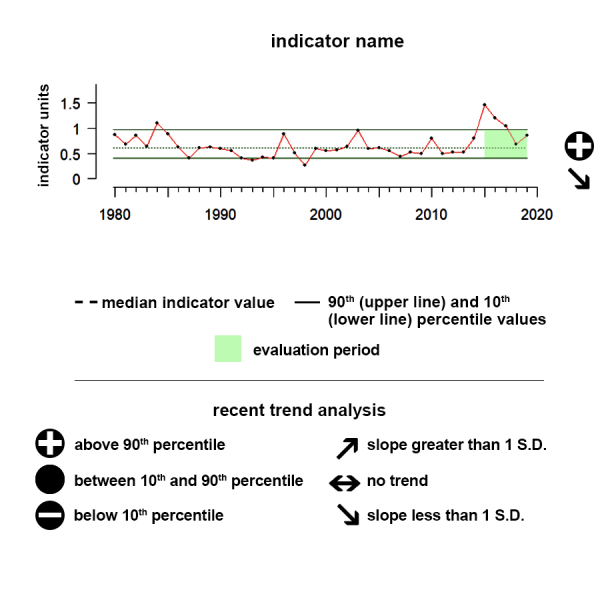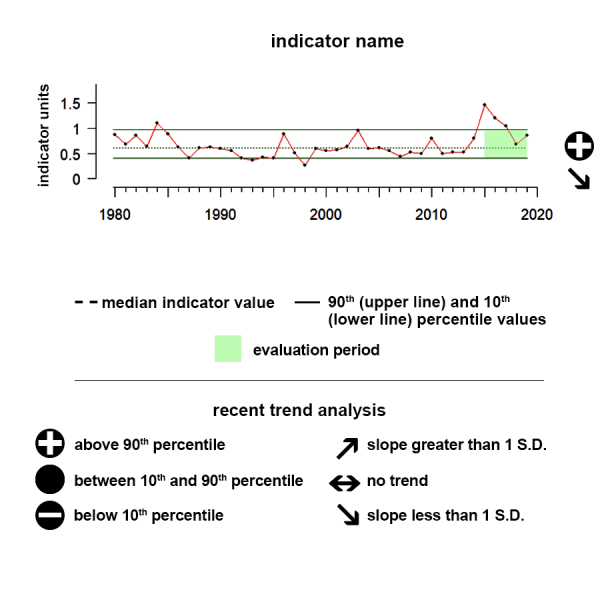
Description of Coastal Population:
While marine ecosystems are important for people all across the country, they are essential for people living in coastal communities. The population density of coastal counties is over six times greater than inland counties. In the U.S. coastal counties make up less than 10 percent of the total land area (not including Alaska), but account for 39 percent of the total population. From 1970 to 2010, the population of these counties increased by almost 40% and are projected to increase by over 10 million people or 8+% into the 2020s.
The population density of an area is an important factor for economic planning, emergency preparedness, understanding environmental impacts, resource demand, and many other reasons. Thus, this indicator is important to track. We present the number of residents within all regions.
Data Source:
Coastal population data was retrieved from the Census Bureau’s county population totals, filtered to present coastal counties using the Census Bureau’s list of coastal counties within each state. Coastal county populations were then summed within each region for reporting purposes.
For the most up to date data, please visit the original source linked above.
Understanding the Time series plots
Time series plots show the changes in each indicator as a function of time, over the period 1980-present. Each plot also shows horizontal lines that indicate the median (middle) value of that indicator, as well as the 10th and 90th percentiles, each calculated for the entire period of measurement. Time series plots were only developed for datasets with at least 10 years of data. Two symbols located to the right of each plot describe how recent values of an indicator compare against the overall series. A black circle indicates whether the indicator values over the last five years are on average above the series 90th percentile (plus sign), below the 10th percentile (minus sign), or between those two values (solid circle). Beneath that an arrow reflects the trend of the indicator over the last five years; an increase or decrease greater than one standard deviation is reflected in upward or downward arrows respectively, while a change of less than one standard deviation is recorded by a left-right arrow.

Alaska Coastal Population
Alaska’s average coastal population between 2017 – 2022 was substantially above historic levels, although the recent trend is not different from historical trends.
Values correspond to the total coastal population for a given region
Time Series
Alaska’s average coastal population between 2017 – 2022 was substantially above historic levels, although the recent trend is not different from historical trends.
Indicator Source Information:
The American Community Survey (ACS) helps local officials, community leaders, and businesses understand the changes taking place in their communities. It is the premier source for detailed population and housing information about our nation.
Data Background and Caveats:
The values represented here are coastal county population estimates for states bordering US Large Marine Ecosystems as calculated by the US Census Bureau from the American Community Survey.
Hawai'i Population
The 2017 – 2022 average coastal population in Hawai'i was substantially above historic levels, although the recent trend is not different from historical trends.
Values correspond to the total coastal population for a given region
Time Series
The 2017 – 2022 average coastal population in Hawaii was substantially above historic levels, although the recent trend is not different from historical trends.
Indicator Source Information:
The American Community Survey (ACS) helps local officials, community leaders, and businesses understand the changes taking place in their communities. It is the premier source for detailed population and housing information about our nation.
Data Background and Caveats:
The values represented here are coastal county population estimates for states bordering US Large Marine Ecosystems as calculated by the US Census Bureau from the American Community Survey.
California Current Coastal Population
The 2017 – 2022 average coastal population in the California Current ecosystem was substantially above historic levels, although the recent trend is not different from historical trends.
Values correspond to the total coastal population for a given region
Time Series
The 2017 – 2022 average coastal population in the California Current ecosystem was substantially above historic levels, although the recent trend is not different from historical trends.
Indicator Source Information:
The American Community Survey (ACS) helps local officials, community leaders, and businesses understand the changes taking place in their communities. It is the premier source for detailed population and housing information about our nation.
Data Background and Caveats:
The values represented here are coastal county population estimates for states bordering US Large Marine Ecosystems as calculated by the US Census Bureau from the American Community Survey.
Gulf of America Coastal Population
The 2017 – 2022 average coastal population along the Gulf of America was substantially above historic levels, although the recent trend is not different from historical trends.
Values correspond to the total coastal population for a given region
Time Series
The 2017 – 2022 average coastal population along the Gulf of America was substantially above historic levels, although the recent trend is not different from historical trends.
Indicator Source Information:
The American Community Survey (ACS) helps local officials, community leaders, and businesses understand the changes taking place in their communities. It is the premier source for detailed population and housing information about our nation.
Data Background and Caveats:
The values represented here are coastal county population estimates for states bordering US Large Marine Ecosystems as calculated by the US Census Bureau from the American Community Survey.
Southeast Coastal Population
The 2017 – 2022 average coastal population in the Southeast was substantially above historic levels, although the recent trend is not different from historical trends.
Values correspond to the total coastal population for a given region
Time Series
The 2017 – 2022 average coastal population in the Southeast was substantially above historic levels, although the recent trend is not different from historical trends.
Indicator Source Information:
The American Community Survey (ACS) helps local officials, community leaders, and businesses understand the changes taking place in their communities. It is the premier source for detailed population and housing information about our nation.
Data Background and Caveats:
The values represented here are coastal county population estimates for states bordering US Large Marine Ecosystems as calculated by the US Census Bureau from the American Community Survey.
Northeast Coastal Population
The 2017 – 2022 average coastal population in the Northeast was substantially above historic levels, although the recent trend is not different from historical trends.
Values correspond to the total coastal population for a given region
Time Series
The 2017 – 2022 average coastal population in the Northeast was substantially above historic levels, although the recent trend is not different from historical trends.
Indicator Source Information:
The American Community Survey (ACS) helps local officials, community leaders, and businesses understand the changes taking place in their communities. It is the premier source for detailed population and housing information about our nation.
Data Background and Caveats:
The values represented here are coastal county population estimates for states bordering US Large Marine Ecosystems as calculated by the US Census Bureau from the American Community Survey.
Great Lakes Coastal Population
The 2017 – 2022 average coastal population in the Great Lakes was consistent with historic levels, and though there is a significant decreasing trend.
Values correspond to the total coastal population for a given region
Time Series
The 2017 – 2022 average coastal population in the Great Lakes was consistent with historic levels, and though there is a significant decreasing trend.
Indicator Source Information:
The American Community Survey (ACS) helps local officials, community leaders, and businesses understand the changes taking place in their communities. It is the premier source for detailed population and housing information about our nation.
Data Background and Caveats:
The values represented here are coastal county population estimates for states bordering US Large Marine Ecosystems as calculated by the US Census Bureau from the American Community Survey.
Lake Ontario US Coastal Population
The 2017 – 2022 average coastal population around Lake Ontario was below historic levels, and the recent trends are significantly decreasing.
Values correspond to the total coastal population for a given region
Time Series
The 2017 – 2022 average coastal population around Lake Ontario was below historic levels, and the recent trends are significantly decreasing.
Indicator Source Information:
The American Community Survey (ACS) helps local officials, community leaders, and businesses understand the changes taking place in their communities. It is the premier source for detailed population and housing information about our nation.
Data Background and Caveats:
The values represented here are coastal county population estimates for states bordering US Large Marine Ecosystems as calculated by the US Census Bureau from the American Community Survey.
Lake Erie US Coastal Population
The 2017 – 2022 average coastal population around Lake Erie was around historic levels, and the recent trend is not different from historical trends.
Values correspond to the total coastal population for a given region
Time Series
The 2017 – 2022 average coastal population around Lake Erie was around historic levels, and the recent trend is not different from historical trends.
Indicator Source Information:
The American Community Survey (ACS) helps local officials, community leaders, and businesses understand the changes taking place in their communities. It is the premier source for detailed population and housing information about our nation.
Data Background and Caveats:
The values represented here are coastal county population estimates for states bordering US Large Marine Ecosystems as calculated by the US Census Bureau from the American Community Survey.
Lake Huron US Coastal Population
The 2017 – 2022 average coastal population around Lake Huron was below historic levels, and the recent trend remains significantly decreasing.
Values correspond to the total coastal population for a given region
Time Series
The 2017 – 2022 average coastal population around Lake Huron was below historic levels, and the recent trend remains significantly decreasing.
Indicator Source Information:
The American Community Survey (ACS) helps local officials, community leaders, and businesses understand the changes taking place in their communities. It is the premier source for detailed population and housing information about our nation.
Data Background and Caveats:
The values represented here are coastal county population estimates for states bordering US Large Marine Ecosystems as calculated by the US Census Bureau from the American Community Survey.
Lake Michigan US Coastal Population
The 2017 – 2022 average coastal population around Lake Michigan was consistent with historic levels, and the recent trend is not different from historical trends.
Values correspond to the total coastal population for a given region
Time Series
The 2017 – 2022 average coastal population around Lake Michigan was consistent with historic levels, and the recent trend is not different from historical trends.
Indicator Source Information:
The American Community Survey (ACS) helps local officials, community leaders, and businesses understand the changes taking place in their communities. It is the premier source for detailed population and housing information about our nation.
Data Background and Caveats:
The values represented here are coastal county population estimates for states bordering US Large Marine Ecosystems as calculated by the US Census Bureau from the American Community Survey.
Lake Superior US Coastal Population
The 2017 – 2022 average coastal population around Lake Superior was below historic levels, and the recent trend was significantly decreasing.
Values correspond to the total coastal population for a given region
Time Series
The 2017 – 2022 average coastal population around Lake Superior was below historic levels, and the recent trend was significantly decreasing.
Indicator Source Information:
The American Community Survey (ACS) helps local officials, community leaders, and businesses understand the changes taking place in their communities. It is the premier source for detailed population and housing information about our nation.
Data Background and Caveats:
The values represented here are coastal county population estimates for states bordering US Large Marine Ecosystems as calculated by the US Census Bureau from the American Community Survey.
Census U.S. Intercensal County Population Data, 1970-2014
The Census Bureau's Population Estimates Program publishes population estimates each year.
Explore Census Data
The Census Bureau is the leading source of quality data about the nation's people and economy.
NOAA Report on the Ocean and Great Lakes Economy of the United States
This report examines the critically important economic contributions of the oceans and Great Lakes. The report presents the NOAA Office for Coastal Management’s Economics: National Ocean Watch (ENOW) data set, and includes a variety of infographics at the national, regional, and state levels.
NMFS Community Vulnerability
We conduct research to better understand the impacts of management decisions on our nation’s vital fishing communities. Each region creates fishing community profiles, which contain social and economic data. Social indicators are used to help assess community resilience and vulnerability.
NOAA Economic National Ocean Watch data base -
The Economics: National Ocean Watch (ENOW) data set features time-series data focused on the six economic sectors that are dependent on the oceans and Great Lakes. ENOW is available for counties, states, regions, and the nation in a wide variety of formats.





